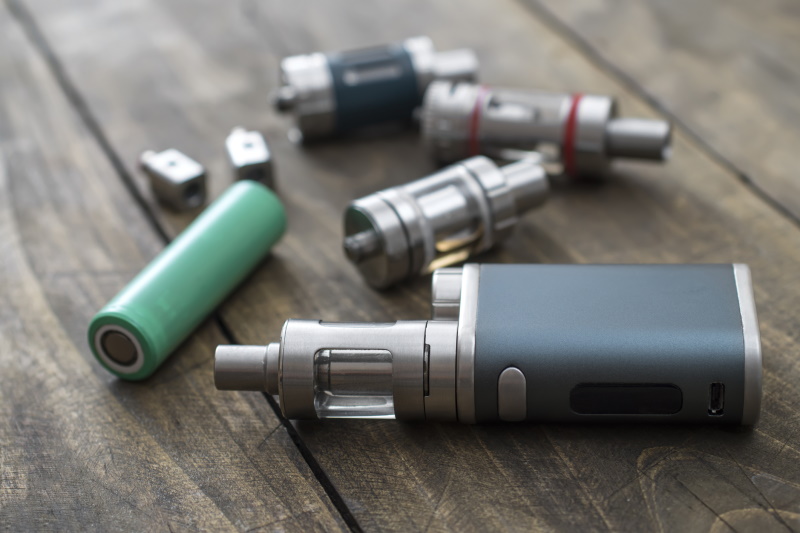Science
Otago Research Reveals Vaping Devices Promote Secrecy Among Youth

A recent study conducted by Dr. Robin Quigg at the University of Otago has uncovered that the design of vaping devices significantly contributes to the normalization of vaping, particularly among young Māori. The research highlights how these devices facilitate discreet use, allowing individuals to vape in locations where smoking is prohibited.
Dr. Quigg, who is affiliated with the Ngāti Raukawa iwi, explored the context of vaping among young Māori through discussions with seven collective groups within a kaupapa Māori framework. The findings indicate that more than half of the participants, aged between 18 and 26 years, had never smoked traditional cigarettes but have engaged with vaping. Participants noted that the discreet nature of vaping devices encourages continued use and potential nicotine addiction.
“Our study suggests that the design of vaping devices, particularly their ability to be concealed, has facilitated the normalization of vaping among young people,” Dr. Quigg stated. She observed that many participants reported seeing individuals vaping in locations such as libraries and lecture theatres, environments where smoking is typically forbidden.
The research also uncovered troubling instances of vaping in sacred places, including urupā and marae. One participant remarked on observing people vaping throughout the entire marae complex, even on the ātea. While some marae have designated vaping areas, others maintain a strict ‘auahi kore’ policy, which prohibits smoking altogether.
Although designated smoking areas exist, many vapers do not adhere to these restrictions. “You frequently see smokers moving to the [smoking] zone, but many vapers remain in the general area,” one participant noted. This behavior suggests a lack of compliance with existing regulations surrounding vaping.
In light of these findings, Dr. Quigg is advocating for more stringent regulations regarding the design of vaping devices. She emphasizes that current policies are struggling to keep pace with the evolving landscape of nicotine products in Aotearoa, New Zealand.
“There is an urgent need for targeted regulatory action,” she asserted. Dr. Quigg recommends several measures, such as mandating larger device sizes, promoting designs that are less lifestyle-oriented, and limiting flavours that produce appealing scents. These changes would not only reduce the concealability of vaping devices but also help maintain the integrity of indoor environments like libraries and lecture theatres, as well as outdoor spaces designated as smokefree, including urupā, marae grounds, and playgrounds.
Dr. Quigg cautions that simply regulating vaping devices will not fully protect young people from nicotine addiction. “Stronger measures must be implemented to diminish the allure of vaping,” she concluded. This call for action reflects a growing concern over the accessibility and acceptance of vaping among youth, urging policymakers to address the issue with urgency.
-

 World1 week ago
World1 week agoPrivate Funeral Held for Dean Field and His Three Children
-

 Top Stories2 weeks ago
Top Stories2 weeks agoFuneral Planned for Field Siblings After Tragic House Fire
-

 Sports3 months ago
Sports3 months agoNetball New Zealand Stands Down Dame Noeline Taurua for Series
-

 Entertainment3 months ago
Entertainment3 months agoTributes Pour In for Lachlan Rofe, Reality Star, Dead at 47
-

 Entertainment2 months ago
Entertainment2 months agoNew ‘Maverick’ Chaser Joins Beat the Chasers Season Finale
-

 Sports3 months ago
Sports3 months agoSilver Ferns Legend Laura Langman Criticizes Team’s Attitude
-

 Sports4 weeks ago
Sports4 weeks agoEli Katoa Rushed to Hospital After Sideline Incident During Match
-

 Politics2 months ago
Politics2 months agoNetball NZ Calls for Respect Amid Dame Taurua’s Standoff
-

 World2 weeks ago
World2 weeks agoInvestigation Underway in Tragic Sanson House Fire Involving Family
-

 Top Stories2 weeks ago
Top Stories2 weeks agoShock and Grief Follow Tragic Family Deaths in New Zealand
-

 Entertainment3 months ago
Entertainment3 months agoKhloe Kardashian Embraces Innovative Stem Cell Therapy in Mexico
-

 World4 months ago
World4 months agoPolice Arrest Multiple Individuals During Funeral for Zain Taikato-Fox





















